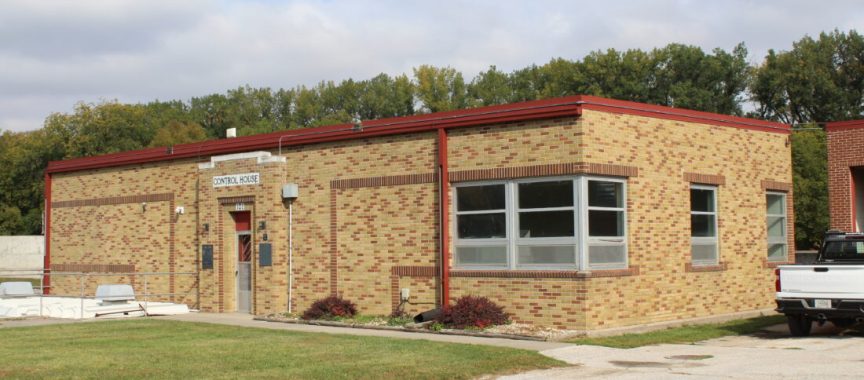At the end of August, Bolton & Menk Inc., a Minnesota firm retained by the City of Webster City as a consultant to assess and replace its wastewater treatment facilities, delivered a 100-page report to city staff and the City Council of Webster City. The study’s main conclusion is that the present facilities are obsolete, and must be replaced, at a capital cost estimated to be as high as $78.4 million.
The study recommended three possible courses of action, with a strong endorsement for its option No. 1, “a new extended aeration activated sludge plant with biological nitrogen and phosphorus removal at a site previously purchased by the city south of town.”
The Council, which has been aware of the requirement for new wastewater facilities for a number of years, quickly approved the plan at its September 2022 meeting. The plan for the new facility has been submitted to the Iowa Department of Natural Resources for its final approval, which is expected before the end of 2022.
The Daily Freeman-Journal has been reviewing the report to understand all aspects of what will be the largest, most expensive project in the city’s history. This is the first in a series of articles to explain the project, and its implications — environmental and economic — to readers and ratepayers.
The study included an in-depth technical assessment of the present wastewater treatment facility at 101 East Ohio St. on Webster City’s southeast side, concluding: “modifications to the existing system were evaluated and found to be not economically feasible.”
The original control house, built in 1939, remains in service today. It, and related secondary treatment facilities at the plant have seen five significant upgrades and improvements over the past 83 years.
The report continues: “The existing fixed-film process is not capable of significant total nitrogen and phosphorus removal as required by the Iowa Nutrient Reduction Strategy. Additionally, the existing treatment facility is at the end of its useful life and a major renovation is required.” The fixed-film process employs rock and plastic substrates to support growth of bacteria, which, in turn, feeds on components in the wastewater to clean it up prior to release. Systems of this type have been used for more than 100 years.
The effort for better treatment of wastewater in 12 states along the Mississippi River advanced in 2008 when the U.S. Environmental Protection Agency identified a need to reduce phosphorus and nitrogen flowing into the river from farm fields, lawns and golf courses, municipal and industrial wastewater treatment systems. Phosphorus and nitrogen, key ingredients in fertilizers, are blamed for the “dead zone” at the mouth of the river in the Gulf of Mexico. These two nutrients cause overgrowth of algae in the Gulf south of New Orleans, which use up oxygen, making it difficult for fish to survive.
Iowa is one of these states, and its plan to reduce nutrient runoff into the Mississippi is called the Iowa Nutrient Reduction Strategy. It was developed jointly by Iowa State University, the Iowa Department of Agriculture, and DNR. The Strategy has identified wastewater treatment systems as prime targets for improvement. As a result, cities across Iowa — large and small — are facing the same need to upgrade or replace wastewater treatment facilities as Webster City.
Webster City Mayor John Hawkins has worked on this issue for years, saying, “we started on this almost six years ago. The project was supposed to have been completed in 2021.”
In 2018, Vero Blue was starting production in the former Electrolux warehouse on Des Moines Street. The plant was expected to be a major contributor of wastewater, but hadn’t reported its projected requirements to the city. The City Council deferred action on a new wastewater plant until Vero Blue’s demand could be accurately forecast.
As illustrated by the Vero Blue case, a new wastewater treatment plant isn’t something to rush into; there’s a lot at stake.
The City Council has directed that any new wastewater treatment facility must meet the city’s needs for a minimum 20 years into the future. This requires projecting the city’s population in the 2040s, meeting the regulatory requirements for cleaner water discharged into the Boone River, and the needs of Webster City’s industries for wastewater treatment.
The city’s food processing plants — Webster City Custom Meats, Mary Ann’s Specialty Foods and Natural Shrimp — are big customers of the wastewater treatment plant. So, too, are Mertz Engineering Inc. and Cactus Family Farms LLC. To ensure the new plant can handle expected future demand, the City Council directed Bolton & Menk to include a 25% reserve capacity to support industrial growth.
Financing an expenditure of this size will be a challenge. There are several sources of funds to pay for new wastewater treatment facilities, including Iowa’s Clean Water State Revolving Fund, the United States Department of Agriculture’s Rural Development loans, and FEMA (Federal Emergency Management Agency) public assistance grants.
A new bond issue could also be used to pay for the project. In addition to the foregoing, local ratepayers, residential, commercial and industrial, will almost certainly see higher sewer rates in future.
Assistant City Manager Biridiana Bishop said all these, and other sources of potential funding, are being carefully studied.
Bishop, who will manage the project for the city, said of the Bolton & Menk study: “The facility plan highlights several reasons why a new wastewater treatment plant is needed, and I am impressed with how long the existing facility has been able to serve the community.”
View this article as it originally appeared in the Daily Freeman-Journal.
Last modified: October 31, 2022

